Rust is a popular multiplayer-only survival video game that is played by millions of gamers across the globe. While the game is amazing, it is not uncommon for users to experience performance issues in the game. While playing Rust, a lot of users complained of facing stutters, low FPS, lags, and many other problems. It becomes frustrating when the game doesn’t perform well. So, you must troubleshoot the issues using a suitable solution.
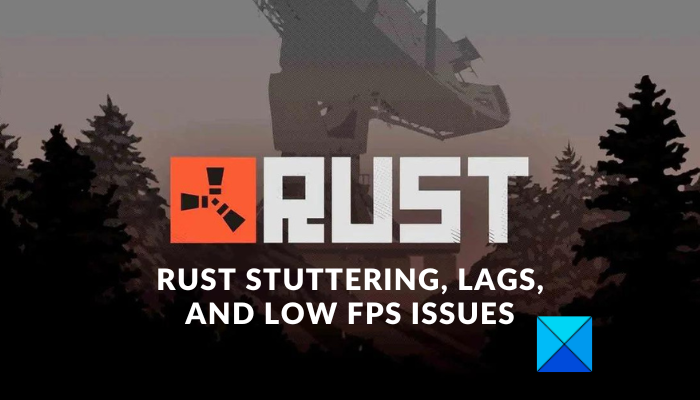
Before moving on to the solutions, here are the potential causes of the issues at hand:
- If you have set higher in-game graphics settings that your computer can’t handle, you might face these issues.
- One of the common reasons for stutters and low FPS in games like Rust is outdated graphics drivers.
- If there are too many background programs running in the background and consuming all your system resources, you will face these issues.
- Broken game files will also give you performance issues in your games.
- In-game overlays can be another reason.
- Other reasons for the same issue include fullscreen optimizations and overclocking.
Now, if you are one of the affected users, this post is what you are looking for. Here, will be discussing different working fixes that will help you resolve all these performance issues in Rust. You can apply a fix that suits your case.
Fix Rust Stuttering, Lags, and Low FPS issues
If you are experiencing stuttering, lags, and low FPS issues while playing Rust game on your Windows PC, here are the solutions you can use to fix these issues:
- Optimize your in-game settings.
- Set High Graphics Performance for Rust.
- Disable Fullscreen Optimizations and high DPI scaling.
- Update your graphics driver to its latest version.
- Close background apps to free up system resources.
- Disable In-game Overlays.
- Verify the integrity of Rust game files.
- Disable Overclocking if applicable.
- Disable Xbox Game Bar.
- Use some custom launch options on Steam.
1] Optimize your in-game settings
Your in-game graphics configurations can cause stuttering, fps drops, and other performance issues in Rust. The settings might be higher than what your system can handle. Thus, the game is performing as it should. So, if the scenario is applicable, you need to adjust your in-game settings accordingly and then see if the issues are resolved.
Here’s how you can do that:
- First, launch Rust and enter its main settings by clicking on OPTIONS.
- Now, go to the GRAPHICS tab and try setting the options to a medium or low value (see the above screenshot for reference).
- Next, move to the SCREEN tab and ensure that the screen resolution is set to your monitor’s native resolution. Also, disable the Vsync option.
- Finally, open the game and check if there is an improvement in its performance.
If this method doesn’t work, move on to the next potential fix.
2] Set High Graphics Performance for Rust
You can also try setting high graphics performance for Rust and then see if its performance has improved or not. Here’s how you can do that:
- First, open Settings using Win+I and go to the Gaming tab.
- Now, press the Game Mode option and click on the Graphics option under Related settings.
- Next, under the Add an app section, select Desktop app and click on the Browse button.
- After that, browse and select the main executable file of the game. You are most likely to find it at the following location:
C:\Program Files (x86)\Steam\steamapps\common\Rust
- Once the game is added, select it, then press the Options button, and choose the High Performance option.
- Finally, reopen the Rust game and check if the problem is fixed.
3] Disable Fullscreen Optimizations and high DPI scaling
Disabling fullscreen optimizations for certain games work for many users in fixing performance issues. So, you can try doing the same for Rust and see if it helps.
- Firstly, open the Steam app, navigate to its LIBRARY section, right-click the Rust game, and choose the Properties option.
- After that, go to the Local Files tab and click on the Browse Local Files button to locate its installation directory.
- Now, right-click on the Rust app file and select the Properties option from the appeared context menu.
- Next, move to the Compatibility tab and tick the checkbox called Disable fullscreen optimizations.
- Now, tap on the Change high DPI settings button and checkmark the Override high DPI scaling behavior option.
- Once done, press the Apply > OK button and repeat the above steps for RustClient as well.
- Finally, reboot your PC and open your game to check if the problem is resolved or not.
4] Update your graphics driver to its latest version
It is very important to make sure that your graphics driver is up-to-date to achieve the best gaming performance. You will experience stutters, low FPS, and other performance issues in Rust and other games if your graphics driver is outdated or faulty.
So, update your graphics driver using the Settings app. Open Settings, go to the Windows Update tab, and tap on the Advanced options > Optional Updates option. You can download and install device driver updates from here. There are various other methods to update your graphics drivers. Once done, reboot your computer and open Rust to fix the issue.
5] Close background apps to free up system resources
Rust and other video games are CPU and GPU intensive. If you have too many applications running in the background, you will not have the required amount of system resources to play the game. Hence, to free up some system resources for your game, you need to kill background programs that are non-essential. To do that, hit Ctrl+Shift+Esc to open Task Manager and use the End task button to terminate unimportant tasks.
If this method helps, great. However, if the problem still remains the same, there might be some other underlying cause of the issue at hand that you need to take care of. So, move on to the next fix.
Read: The Division 2 low FPS, lagging, stuttering and freezing.
6] Disable In-game Overlays
In-game overlay glitches are known to cause performance issues in games like Rust. It is a useful feature, but if you experience stutters, low FPS, lags, etc., in a game, it is recommended to disable it and then play the game.
You can try the below steps to disable the in-game overlay option on Steam:
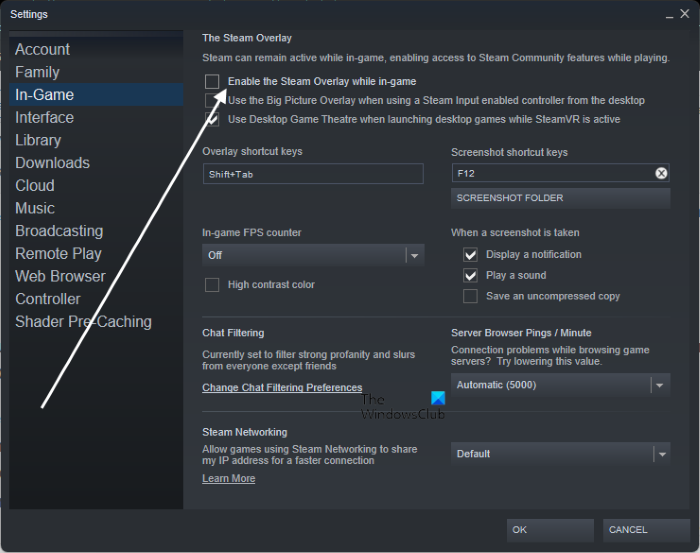
- First, launch the Steam app and click on its Steam > Settings option.
- Inside the Settings page, go to the In-Game tab and untick the option called Enable Steam Overlay while in-game.
To disable GeForce Experience in-game overlay, Nvidia users can follow the below steps:
- Firstly, start the GeForce Experience application and click on the Settings icon from the top right.
- Next, move to the General tab and disable the toggle associated with the In-Game Overlay option.
In case you use Discord Overlay, here are the steps to follow:
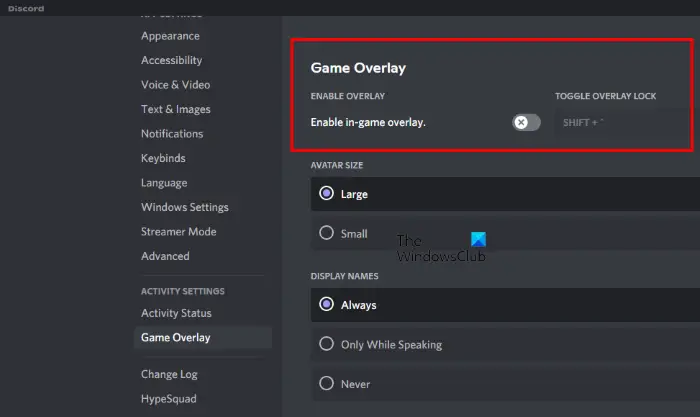
- First, launch the Discord app and tap on the User Settings (gear icon) button.
- Afterward, go to the Game Overlay option available below the ACTIVITY SETTINGS section in the left-side pane.
- Next, turn off the toggle associated with the Enable in-game overlay option.
If this method doesn’t resolve the issue for you, apply the next fix.
7] Verify the integrity of Rust game files
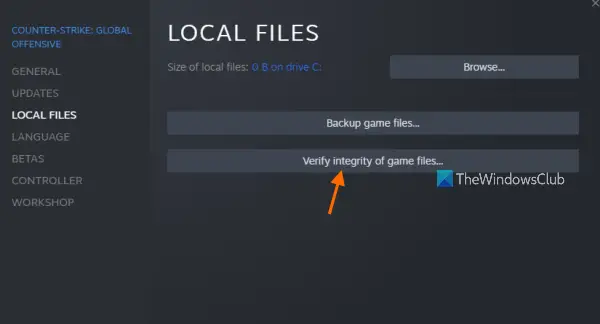
Stuttering, low FPS, and lags are often caused if there is an issue with your game files. The game files do get corrupted and infected over a period of time. So, make sure that your game files are clean and up-to-date. You can use the game file integrity check tool to do so. It is available on the Steam game launcher. Follow the below steps:
- First, start the Steam app, click on Library, and right-click on Rust.
- From the appeared right-click context menu, choose the Properties option.
- In the Properties window, go to the Local Files tab and press the Verify Integrity of Game Files button. It will scan for broken game files and repair them.
- Once done, reopen the Rust game to check whether it is performing well or not.
8] Disable Overclocking if applicable
If you have overclocked your GPU for faster and better system performance, disable it. It is a known fact that overclocking causes stability and other issues with apps and games. So, it is recommended that stop overclocking on your PC and then see if the Rust game works fine or not.
9] Disable Xbox Game Bar
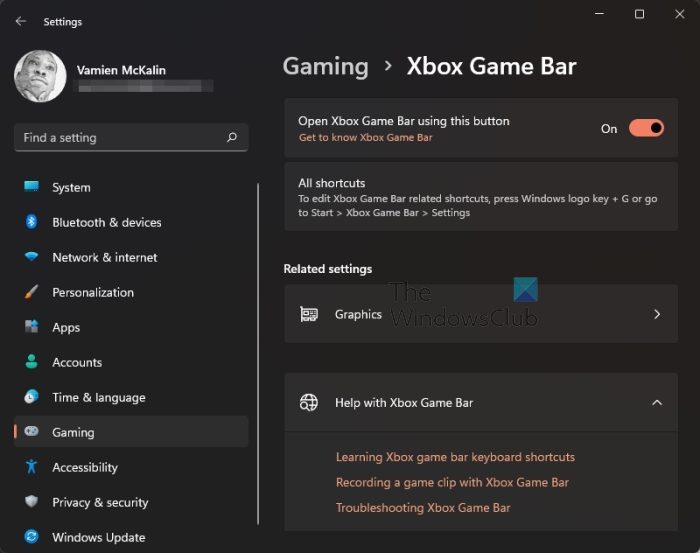
Xbox Game Bar is a useful feature used for recording gameplay on your PC. However, it might not work as intended with all games and might cause performance issues with games like stutters, low FPS, etc. If you have turned on this feature on your computer, disable it and then see if the problem is fixed. Here’s how to do that:
- First, open Settings using Win+I and go to the Gaming tab from the left-side pane.
- Now, click on the Xbox Game Bar option from the right-side pane and disable the respective toggle.
- Try playing the Rust game now and see if the problem is resolved.
10] Use some custom launch options on Steam
You can also try customizing launch options for the Rust game on Steam and see if that helps in enhancing the performance of the game. Here are the steps to do that:
First, open Steam, go to LIBRARY, right-click on Rust, and press the Properties option from the appeared context menu.
From the General tab, go to launch options and you can use the following commands in the box:
-window-mode exclusive -high (for high priority of game) -force-feature-level-11-0 (to use DirectX 11) -malloc=system (set up memory allocator for the game) -maxMem=12000 (utilize your RAM on Rust; 12000=12 GB of RAM, use it according to your specifications) -cpuCount=6 (6=number of cores you have; change it accordingly) -exThreads=12 (12= number of the logical processors; change it accordingly)
Once done, restart Steam and then launch Rust to check if there is an improvement in its performance or not. If not, you can clear the above launch options and use some other fix to resolve the issue.
Why am I getting low FPS on Rust?
Low FPS on Rust can be caused be due to various reasons including outdated graphics driver, outdated Windows OS, overclocking, in-game overlays, and some other reasons. If you want to boost FPS in Rust, make sure your Windows and graphics drivers are updated. You can also disable in-game overlays.
Why is Rust so laggy on PC?
If your computer doesn’t meet the system requirements for Rust, it will be laggy. Apart from that, a corrupted graphics driver is another reason for the same. In order to get rid of this problem, you can go through the solutions mentioned in this article. For your information, these tips and tricks are for Windows 11 and Windows 10 users.
Leave a Reply